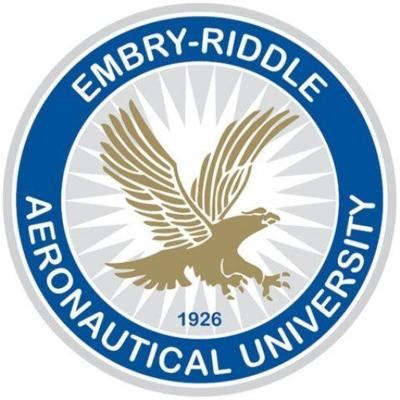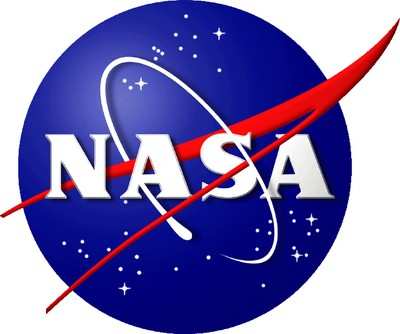Mon, Apr 08, 2024
ERAU and NASA Team to Launch Rockts During Solar Eclipse
On April 8, 2024, Earth will witness an awe-inspiring total solar eclipse, marked by an otherworldly twilight at midday, a sudden drop in temperature, and a peculiar calmness in the wind, accompanied by an enchanting chorus of birdsong. This celestial phenomenon, where the moon entirely blocks the sun, transforming day into night for a brief moment, serves as a perfect backdrop for a groundbreaking scientific endeavor led by Dr. Aroh Barjatya of Embry-Riddle Aeronautical University.

Dr. Barjatya's team aims to delve deep into the impacts of this rare cosmic event on Earth's upper atmosphere through an ambitious experiment involving the launch of three NASA rockets equipped with scientific instruments developed by Embry-Riddle students. These rockets, soaring up to 420 kilometers above NASA's Wallops Flight Facility in Virginia, are part of the APEP mission, designed to probe the atmospheric perturbations caused by the eclipse.
The rapid shift from day to night and back, as the moon's shadow sweeps across Earth, is expected to generate large-scale waves and small-scale perturbations in the atmosphere, potentially interfering with radio communication. By studying these changes, especially in the ionosphere--an upper layer of our atmosphere filled with charged particles--the mission seeks to enhance our understanding of how solar eclipses affect atmospheric conditions.
The ionosphere plays a crucial role in satellite communication and GPS navigation, as signals must pass through this layer. The perturbations caused by the eclipse could offer vital insights into predicting communication disruptions stemming from space-based atmospheric changes. This research is particularly relevant in today's connected society, where the reliability of satellite communications is paramount.

On the day of the eclipse, the rockets will be launched in coordination with the event's timing, each equipped to measure various atmospheric parameters and eject sub-payloads for additional data collection. This comprehensive approach aims to simulate the effects of launching multiple rockets, thereby maximizing data collection efficiency.
The mission is not just about immediate observations but also contributes to a broader understanding of ionospheric perturbations. By comparing data from this and previous missions, Dr. Barjatya's team hopes to draw parallels and deepen our knowledge of atmospheric sciences. Moreover, this experiment underscores the unique capabilities of sounding rockets for targeted scientific studies, especially in exploring the ionosphere's lowest altitudes, a region beyond the reach of most satellites.
This endeavor epitomizes the intersection of curiosity-driven exploration and practical scientific inquiry, demonstrating how extraordinary natural events like solar eclipses can open new avenues for understanding our planet's complex atmospheric phenomena.
More News
NORDO (No Radio) Aircraft that cannot or do not communicate by radio when radio communication is required are referred to as “NORDO.”>[...]
Aero Linx: South Carolina Aviation Association (SCAA) Airports in South Carolina support the state’s economy and are themselves economic generators. Residents, businesses, an>[...]
Also: AV-8B Harrier For CAF Arizona, Boeing Gets ODA, Army NG Rescue, Longitude To C. America A California Superior Court judge recently ruled that GAMI’s unleaded avgas does>[...]
Also: Williams International Builds Up, Marines v Drones, NBAA v Tariffs, New GAMA Members Hermeus confirmed the flight of its Quarterhorse MK 1 aircraft at the Air Force Test Cent>[...]
A Few Questions AND Answers To Help You Get MORE Out of ANN! 1) I forgot my password. How do I find it? 1) Easy... click here and give us your e-mail address--we'll send it to you >[...]
 ANN's Daily Aero-Term (06.04.25): NORDO (No Radio)
ANN's Daily Aero-Term (06.04.25): NORDO (No Radio) ANN's Daily Aero-Linx (06.04.25)
ANN's Daily Aero-Linx (06.04.25) Airborne 06.04.25: G100UL Legal Decision, FAA v Starship, Laser Conviction
Airborne 06.04.25: G100UL Legal Decision, FAA v Starship, Laser Conviction Airborne-NextGen 06.03.25: Hermeus Quarterhorse, VFS Forum, VX4 eVTOL
Airborne-NextGen 06.03.25: Hermeus Quarterhorse, VFS Forum, VX4 eVTOL ANN FAQ: Q&A 101
ANN FAQ: Q&A 101




